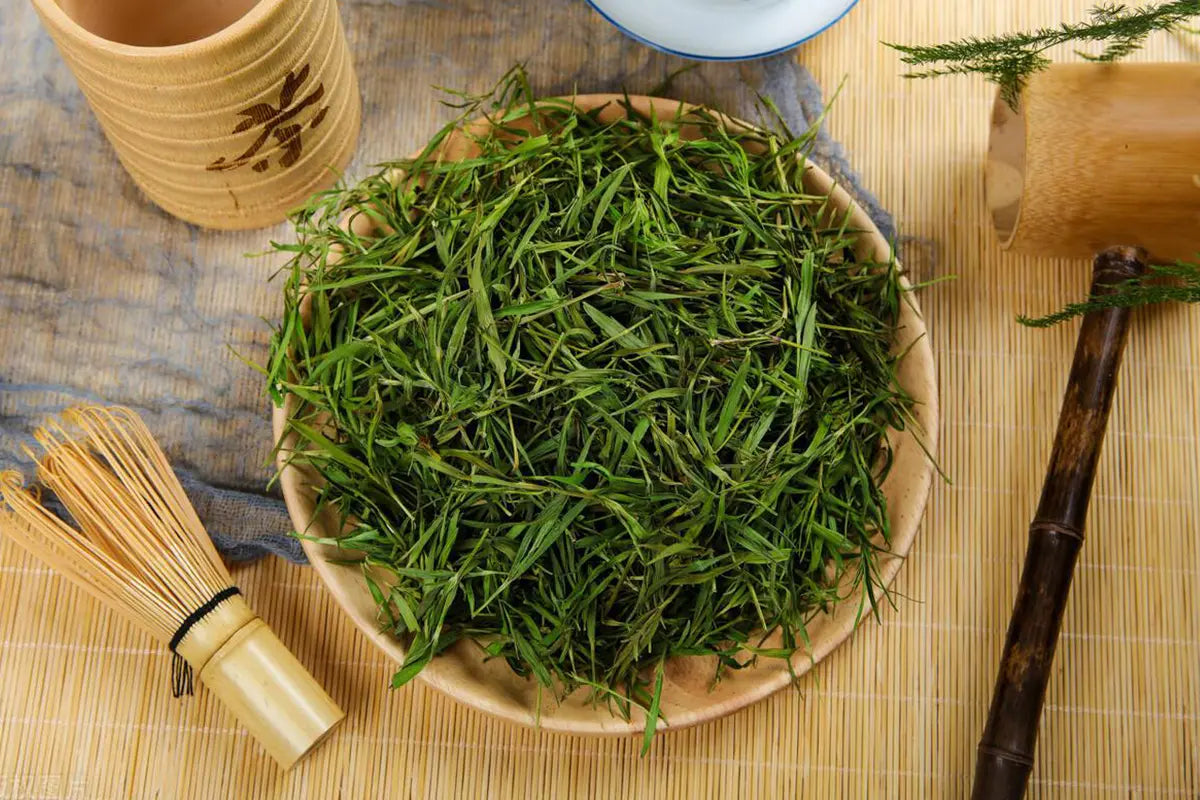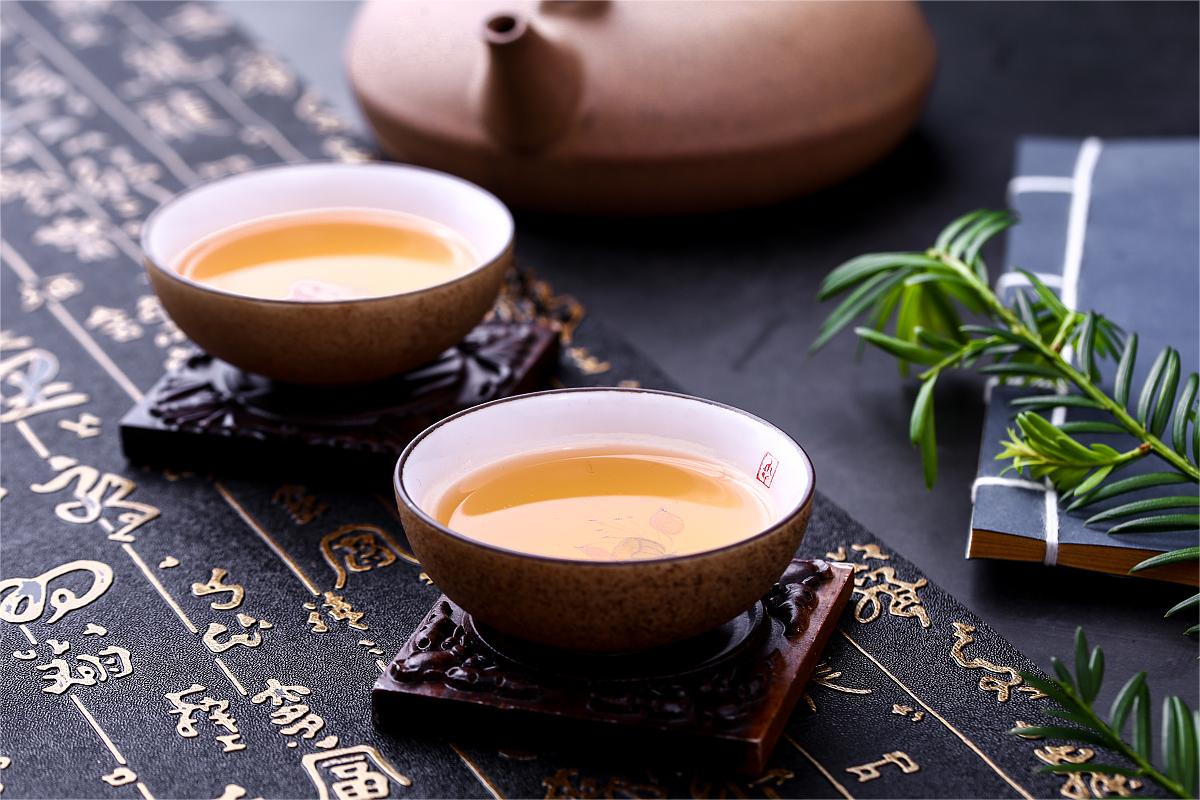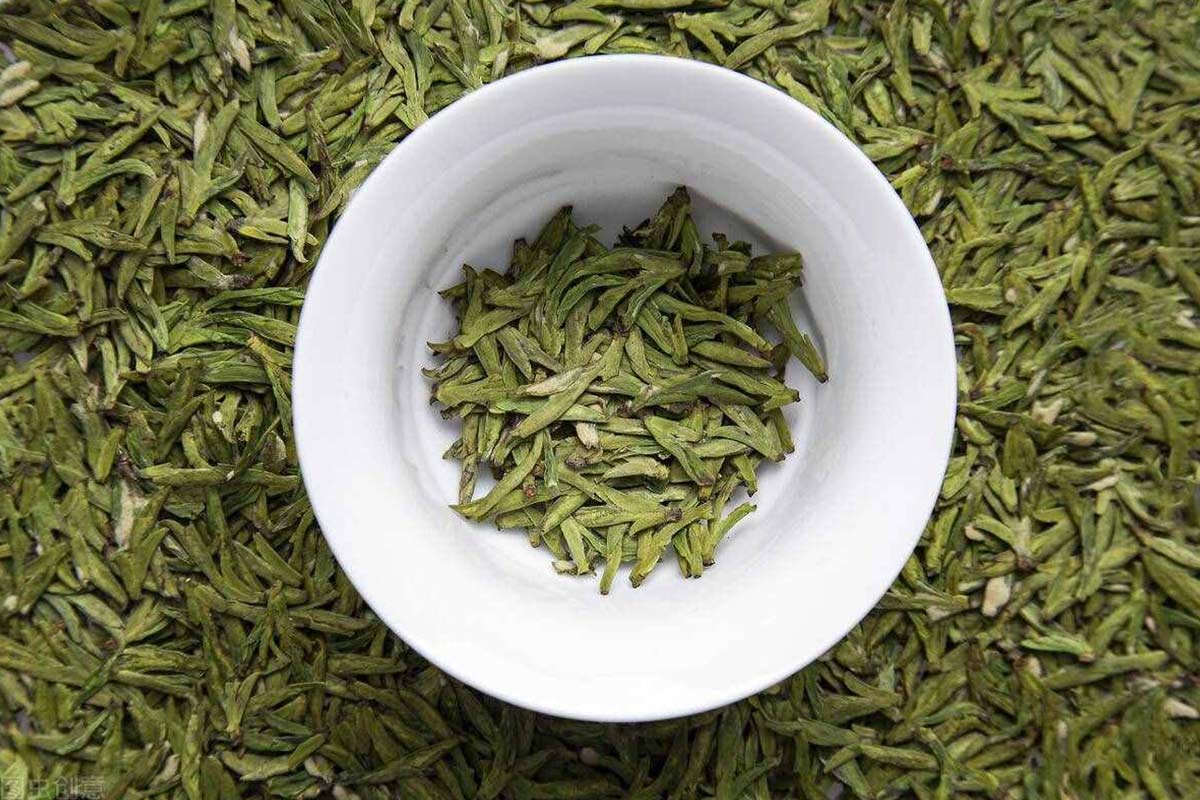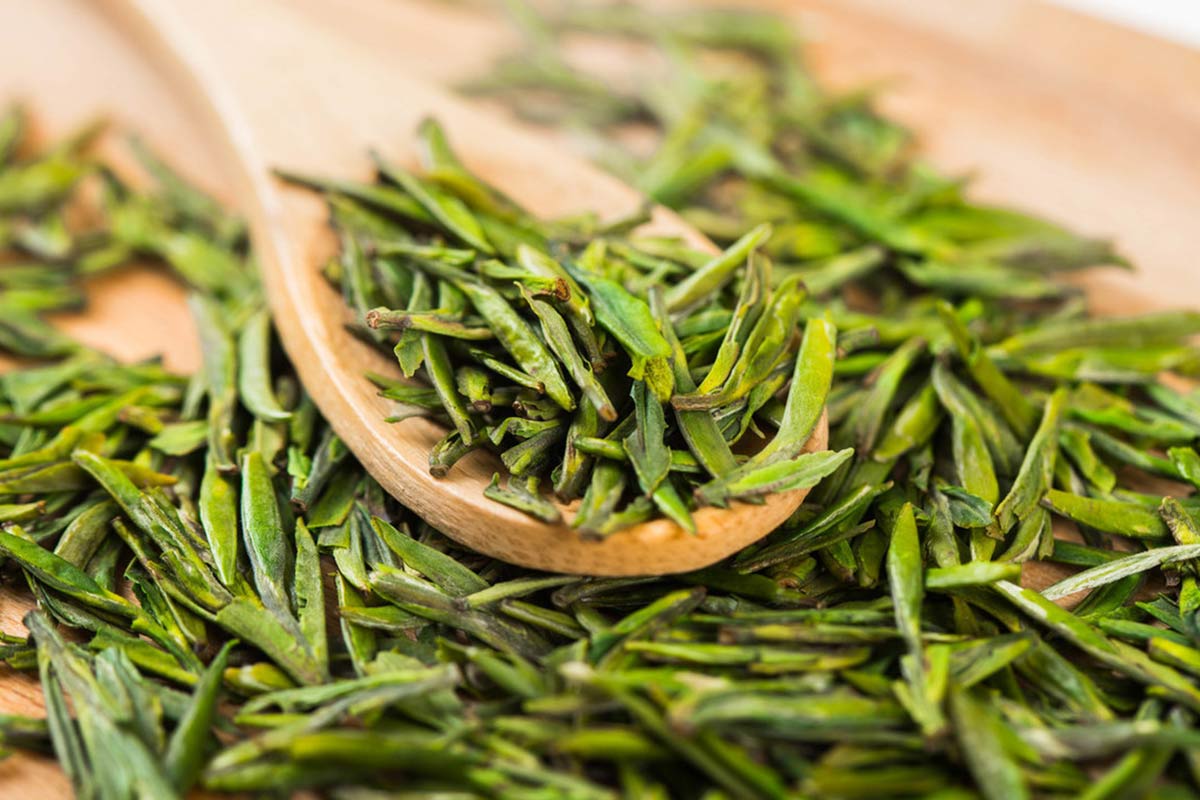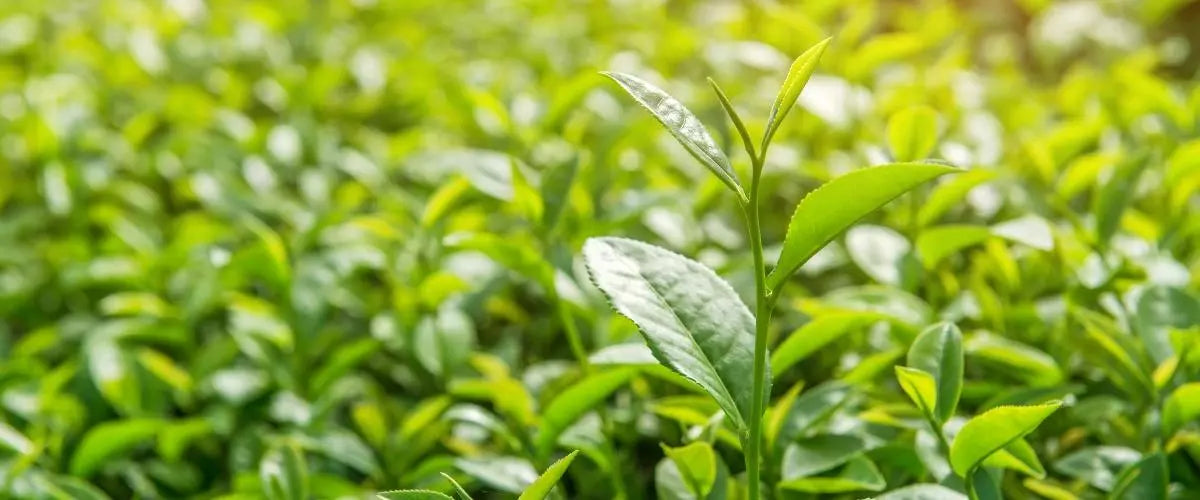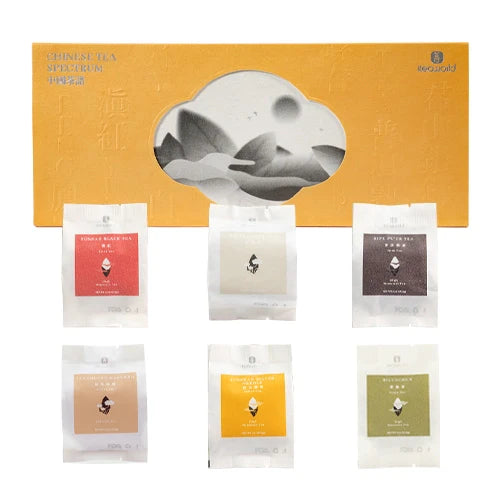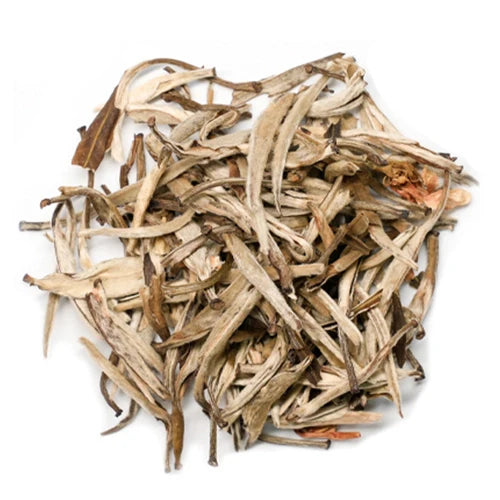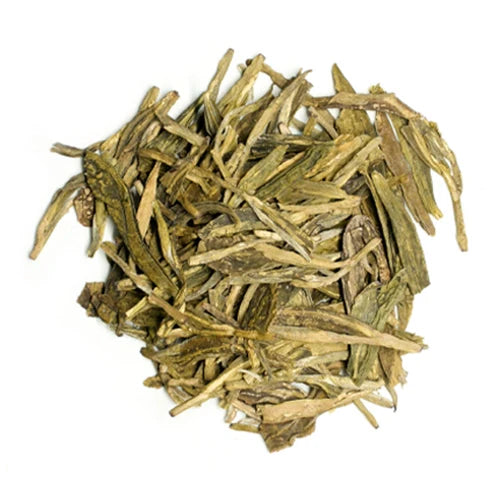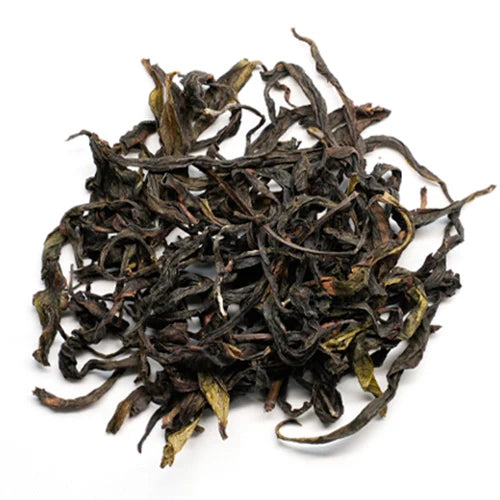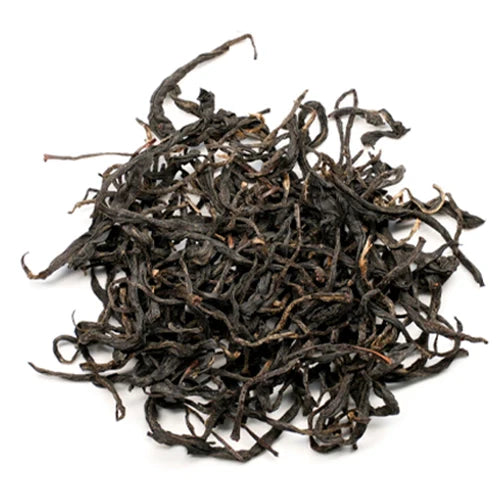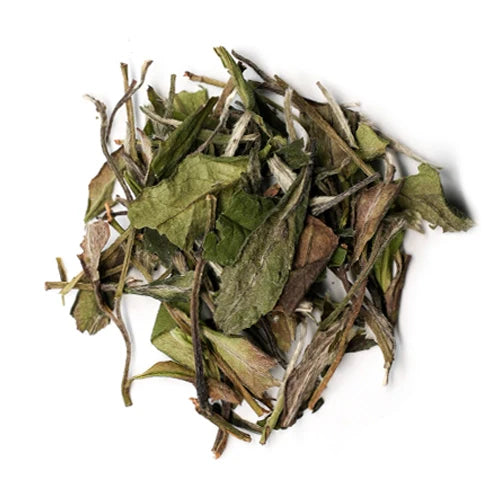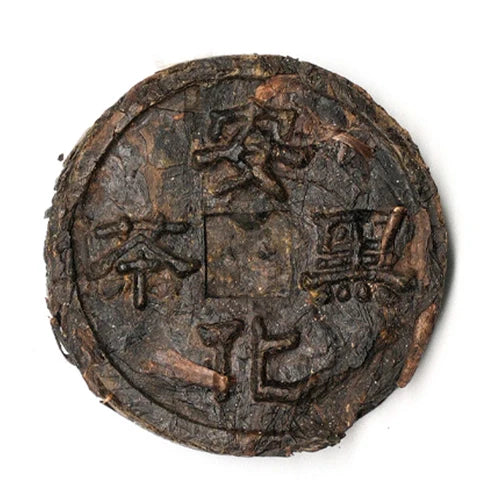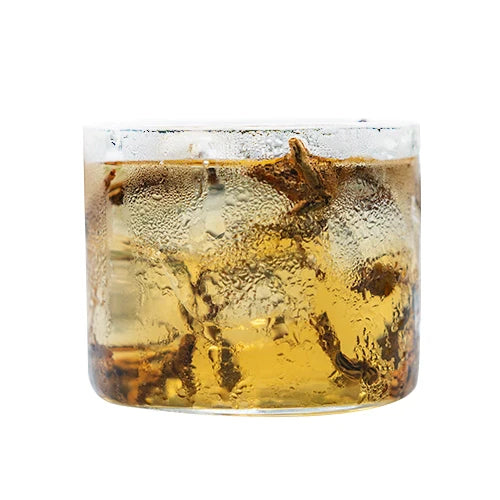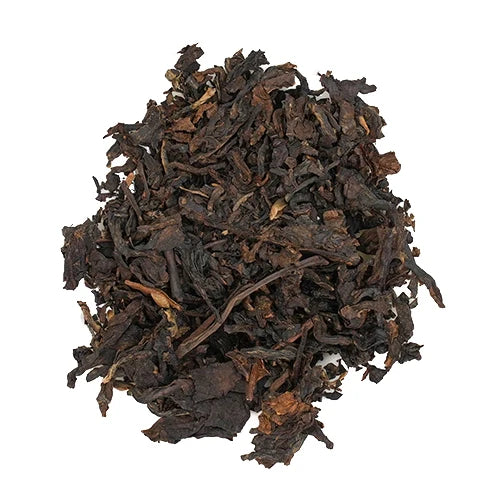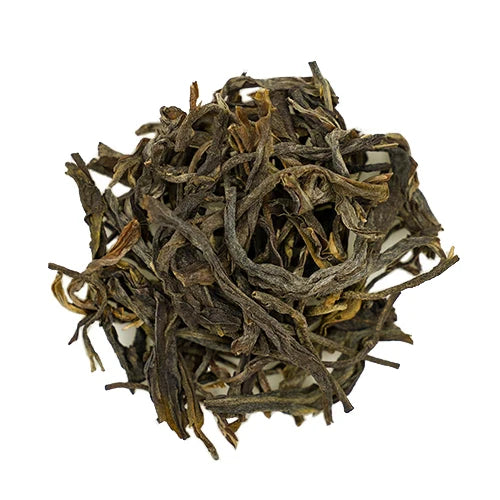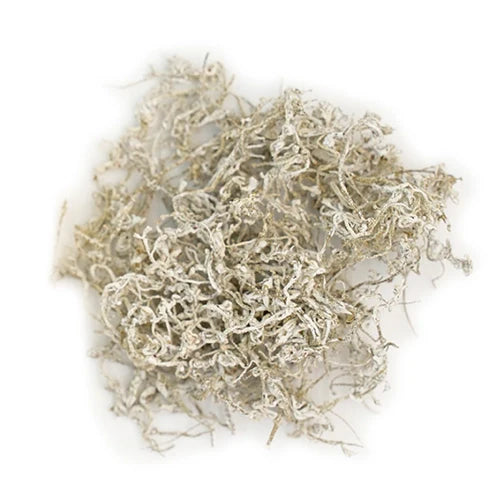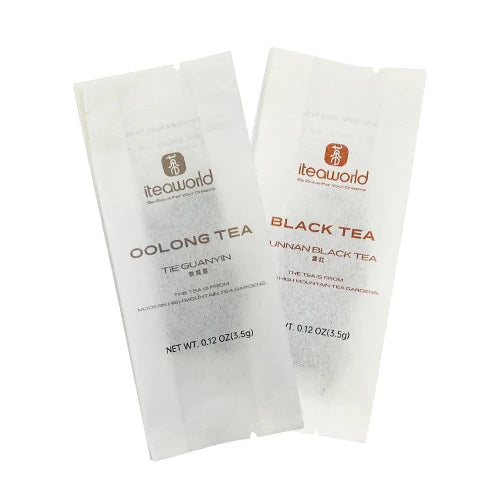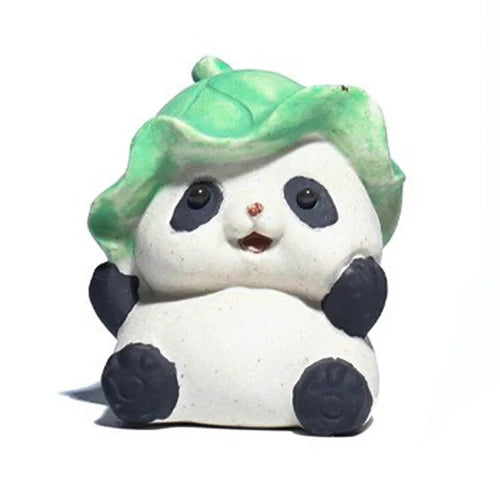Introduction
Oolong tea, with its rich history and captivating flavors, has gained immense popularity among tea enthusiasts worldwide. From its origins in China to its global recognition, Oolong tea offers a diverse range of tastes and aromas that can elevate your tea experience to new heights. In this article, we will delve into the world of Oolong tea and explore five must-try varieties that are sure to captivate your senses and leave a lasting impression.
I. TieGuanyin Oolong Tea
TieGuanyin, a genuine and authentic Anxi tea, serves as our first introduction to the world of Oolong. Hailing from the mist-shrouded mountains of Anxi in the Fujian province of China, this tea boasts a unique flavor profile influenced by its environment.
Anxi is known for its ideal tea-growing conditions, with its high altitude, abundant rainfall, and mild climate. These factors contribute to the development of the intricate flavors and aromas found in TieGuanyin Oolong Tea. The misty atmosphere and nutrient-rich soil create the perfect conditions for the tea bushes to flourish, resulting in leaves that are brimming with flavor.
The name "TieGuanyin" translates to "Iron Goddess of Mercy" in English, and it holds a significant place in Chinese tea culture. Legend has it that a poor farmer discovered a dilapidated temple with an iron statue of Guanyin, the Goddess of Mercy. In gratitude for her blessings, the farmer nurtured the temple and the surrounding tea bushes. The tea produced from these bushes became known as TieGuanyin, a tribute to the benevolent goddess.
TieGuanyin Oolong Tea is characterized by its delicate yet complex flavor profile. It offers a harmonious balance of floral notes, such as orchid and lilac, with subtle hints of roasted nuts and a lingering sweetness. The tea leaves undergo a meticulous process of rolling and roasting, which contributes to its distinctive shape and flavor.
II. Minnan Narcissus Oolong Tea
Our journey continues to Fujian province, where we encounter the Minnan Narcissus Oolong Tea. This remarkable tea takes its name from the Minnan region, known for its lush landscapes and tea-growing traditions.
What sets Minnan Narcissus Oolong Tea apart is its unique cultivation and harvesting process. The tea leaves are carefully plucked from 60-year-old tea trees, which have had decades to develop deep root systems and absorb the essence of the terroir. These mature trees yield leaves with exceptional flavor and complexity, making Minnan Narcissus Oolong Tea a true delight for the senses.
The metabolic process of these old tree leaves contributes to the tea's distinct characteristics. The extended growth period results in higher sugar content and increased polyphenols, enhancing the tea's natural sweetness and antioxidant properties. When brewed, Minnan Shuixian Oolong Tea unveils a mesmerizing harmony of flavors, with notes of honey, orchid, and ripe fruits dancing on the palate.
The misty high mountains that surround the Minnan region play a crucial role in shaping the quality of this tea. The elevation and unique microclimate create a perfect environment for the tea bushes to thrive. The mist that blankets the mountainside nurtures the tea leaves, infusing them with the pure essence of nature. The result is a tea that embodies the pristine beauty and serenity of its surroundings.
III. Dahongpao Oolong Tea (Big Red Robe)
Next, we journey to the core producing area of Dahongpao, where we encounter the legendary Dahongpao Oolong Tea. This tea holds a revered status in the world of Oolong, renowned for its captivating flavors and fascinating history.
Dahongpao, also known as Big Red Robe, has its origins deep within the Wuyi Mountains in Fujian province, China. The tea bushes grow on the rocky cliffs of the Wuyi Mountains, where they are exposed to the elements and thrive in challenging conditions. The unique mineral-rich soil and the misty, humid climate contribute to the tea's distinctive flavor profile.
The name "Dahongpao" translates to "Big Red Robe" in English and has a captivating tale behind it. Legend has it that during the Ming Dynasty, a scholar's parents fell gravely ill. In desperation, the scholar sought the help of monks who resided in the Wuyi Mountains. The monks offered him a tea that miraculously cured his parents. Filled with gratitude, the scholar draped his red robe over the tea bushes as a gesture of respect and gratitude. The tea produced from those bushes became known as Dahongpao, symbolizing the scholar's robe.
Dahongpao Oolong Tea is known for its distinct "Yan" flavor, which refers to the unique mineral notes that come from the rocky soil of the Wuyi Mountains. The tea leaves undergo a meticulous process of rolling, drying, and roasting, which enhances its flavor and aroma. When brewed, Dahongpao Oolong Tea reveals a delightful combination of roasted nuts, caramel, and a subtle hint of floral undertones.
IV. Fenghuang Dancong Oolong Tea (Mi Lan Xiang)
Our exploration of Oolong tea takes us to the enchanting realm of Fenghuang Dancong, specifically the captivating Mi Lan Xiang variety. Hailing from the Fenghuang Mountains in Guangdong province, China, this tea showcases the artistry and complexity of Dancong teas.
Fenghuang Dancong, often referred to as Phoenix Dancong, derives its name from the Fenghuang (Phoenix) Mountain range, known for its breathtaking beauty and ideal tea-growing conditions. Among the diverse array of Dancong teas, Mi Lan Xiang stands out for its unique fragrance and flavor profile.
Mi Lan Xiang, which translates to "Honey Orchid Fragrance," captures the essence of its name. The tea leaves are carefully plucked from ancient tea trees that have been nurtured for generations. The specific cultivation techniques and terroir of the Fenghuang Mountains contribute to the tea's honeyed aroma and lingering floral undertones.
What sets Mi Lan Xiang apart is its remarkable ability to mimic the scents of various fruits and flowers. When brewed, this tea unleashes an orchestra of flavors, with notes of honey, orchid, ripe peach, and even osmanthus. Each sip is a sensory journey, evoking a symphony of delightful and complex tastes.
The skilled artisans of Fenghuang Mountains employ traditional techniques to process the tea leaves. The leaves are carefully twisted and shaped, allowing them to retain their unique characteristics. The result is a visually striking tea with a flavor profile that mirrors the diverse aromas found in nature.
V. Oolong Tea Selection
Our Oolong Tea Selection encompasses a carefully curated assortment of exceptional teas that embody the diverse flavors and traditions of Oolong. Each tea in this collection has been thoughtfully chosen to provide a captivating tea experience.
From the delicate and floral notes of TieGuanyin to the rich and mineral-infused Dahongpao, our selection offers a tantalizing array of Oolong teas to suit every palate. Whether you seek a refreshing and aromatic cup or a deep and complex brew, our Oolong Tea Selection has something to satisfy your discerning taste.
We source our Oolong teas from renowned tea-growing regions, ensuring that only the highest quality leaves make it into our collection. Each tea undergoes meticulous processing, preserving its unique characteristics and capturing the essence of its origin.
Indulge in the enchanting aromas, nuanced flavors, and velvety textures of our Oolong Tea Sampler. Discover the wonders of Fenghuang Dancong with its captivating fragrance, or savor the timeless allure of Minnan Narcissus. Let your taste buds embark on a journey through the rich tapestry of Oolong teas.
VI. Oolong Tea Brewing Tips for Optimal Flavor
Brewing Oolong tea requires precision and attention to detail to unlock its full potential. Here are some essential brewing tips to enhance your Oolong tea experience:
1. Water Temperature:
Oolong teas often benefit from slightly higher water temperatures compared to green teas. Aim for a range of 195-205°F (90-96°C) to extract the flavors effectively. Adjust the temperature based on the specific Oolong tea you are brewing.
2. Tea-to-Water Ratio:
Use approximately 1 teaspoon of Oolong tea leaves per 8 ounces (240 ml) of water. Adjust the amount based on personal preference and the strength of flavor desired.
3. Steeping Time:
The steeping time for Oolong teas can vary depending on the tea type and personal preference. Start with a range of 2-4 minutes and adjust accordingly. Longer steeping times generally result in stronger flavors, while shorter times offer a lighter brew.
4. Multiple Infusions:
Oolong teas are often suitable for multiple infusions, revealing different layers of flavor with each steep. Experiment with longer steeping times for subsequent infusions while maintaining an optimal water temperature.
5. Tea Ware:
Use a teapot or a gaiwan (a traditional Chinese lidded bowl) to brew Oolong tea. These vessels allow for better heat retention and optimal extraction of flavors. Avoid using metal teapots as they can interfere with the tea's delicate flavors.
6. Pre-warming Tea Ware:
Rinse your teapot or gaiwan with hot water before brewing to pre-warm it. This step helps maintain the tea's temperature during steeping and ensures a more consistent flavor profile.
7. Appreciate the Aromas:
Before taking your first sip, inhale the aroma of the brewed Oolong tea. Close your eyes and let the captivating scents transport you to the tea's place of origin.
8. Savor and Enjoy:
Take small sips and allow the flavors to unfold on your palate. Notice the evolving taste profiles, from the initial notes to the lingering aftertaste. Engage all your senses and fully immerse yourself in the Oolong tea experience.
By following these brewing tips, you can unlock the true potential of Oolong teas and create an elevated tea-drinking experience. With practice and exploration, you'll discover your preferred brewing techniques to achieve the perfect cup of Oolong tea every time.
VII. Pairing Oolong Teas with Food for a Culinary Adventure
Oolong teas offer a wide range of flavors and complexities that can be beautifully complemented by various food pairings. Here are nine suggestions to enhance your Oolong tea experience through culinary exploration:
1. Light Oolongs (e.g., TieGuanyin, Jade Oolong):
These teas have delicate floral and fruity notes. Pair them with light and subtly flavored foods such as steamed seafood, sushi, or vegetarian dishes. The tea's gentle flavors won't overpower the food, allowing both to shine.
2. Dark Oolongs (e.g., Dahongpao, Wuyi Rock Oolong):
With their robust and toasty flavors, dark Oolongs pair well with grilled meats, roasted vegetables, and savory dishes. The tea's earthy undertones complement the richness of these foods, creating a harmonious balance of flavors.
3. Floral Oolongs (e.g., Oriental Beauty, Mi Lan Xiang):
These teas exhibit aromatic and floral profiles. Pair them with light desserts like fruit tarts, floral-infused pastries, or delicate cakes. The tea's fragrant notes will enhance the sweetness and provide a delightful sensory experience.
4. Creamy Oolongs (e.g., Jin Xuan, Milk Oolong):
These teas offer a creamy and buttery mouthfeel. They pair well with creamy desserts like custards, crème brûlée, or cheesecake. The tea's rich texture and subtle sweetness create a luxurious combination.
5. Spicy Oolongs (e.g., Wuyi Rou Gui, Fenghuang Dancong):
These teas have a unique spiciness and complexity. Pair them with spicy and flavorful dishes like Thai or Indian cuisine. The tea's bold flavors can stand up to the intense spices, creating a vibrant and memorable pairing.
6. Citrusy Oolongs (e.g., Huang Jin Gui, Alishan):
These teas have bright citrus notes. Pair them with light salads, seafood ceviche, or citrus-infused desserts. The tea's zesty flavors provide a refreshing contrast and elevate the overall dining experience.
7. Nutty Oolongs (e.g., Bao Zhong, Huang Guan Yin):
These teas have nutty and roasted flavors. Pair them with roasted meats, stir-fried vegetables, or nut-based desserts. The tea's nutty undertones complement the savory or sweet dishes, creating a harmonious combination.
8. Chocolatey Oolongs (e.g., Qilan, Gui Fei):
These teas have hints of chocolate and cocoa. Pair them with dark chocolate desserts, chocolate truffles, or flourless cakes. The tea's chocolate notes enhance the richness and depth of the chocolate-based treats.
9. Cheese Pairings:
Oolong teas can also be enjoyed with a variety of cheeses. Light Oolongs pair well with fresh and mild cheeses like goat cheese, while darker and more robust Oolongs can be paired with aged and stronger cheeses like cheddar or blue cheese. The tea's flavors complement the creamy, salty, or tangy profiles of different cheeses.
Remember, the key to successful tea and food pairings is to find a balance where the flavors of both the tea and the food complement and enhance each other. Experiment with different combinations to discover your personal preferences and embark on a culinary adventure with Oolong teas as your guide.
Whether you're enjoying a traditional tea ceremony or simply savoring a cup of Oolong tea with a meal, the art of pairing tea with food adds a new dimension to your tea-drinking experience. Explore the diverse flavors of Oolong teas alongside various cuisines, and let your taste buds revel in the harmony of flavors.
VIII. Oolong Tea Storage and Shelf Life Maintenance
To ensure the longevity and preservation of your Oolong tea's flavor and quality, proper storage is essential. Follow these guidelines to maintain the freshness of your Oolong tea:
1. Choose the Right Container:
Store your Oolong tea in an airtight container that is opaque or made of thick, non-reactive material, such as ceramic, tin, or dark-colored glass. This helps protect the tea from exposure to light, air, and strong odors.
2. Keep Away from Moisture:
Moisture can degrade the quality of tea leaves and promote the growth of mold or mildew. Store your Oolong tea in a dry place, away from humidity and sources of moisture, such as the kitchen sink or refrigerator.
3. Avoid Heat and Sunlight:
Protect your Oolong tea from direct sunlight and excessive heat, as they can accelerate the degradation process and cause the tea to lose its flavor and aroma. Store the tea in a cool and dark place, such as a pantry or cupboard.
4. Minimize Air Exposure:
Oxygen can cause tea leaves to oxidize and deteriorate. When storing Oolong tea, minimize air exposure by tightly sealing the container after each use. Consider using smaller containers to reduce the amount of air trapped inside.
5. Separate Strong Odors:
Oolong tea can absorb odors easily. Keep it away from strong-smelling substances like spices, herbs, or aromatic foods to prevent the tea from acquiring unwanted flavors.
6. Avoid Freezing or Refrigerating:
While refrigeration or freezing may seem like an option for long-term storage, it can introduce moisture and alter the tea's flavor and aroma. It is generally recommended to store Oolong tea at room temperature.
7. Monitor Shelf Life:
Oolong teas are best consumed within 6-12 months of purchase for optimal flavor and freshness. Over time, the tea may lose its vibrant flavors and become stale. Label your tea containers with the purchase date to keep track of their freshness.
8. Quality Water for Brewing:
When preparing Oolong tea, use quality filtered or spring water. Chlorinated or heavily mineralized water can affect the taste of the tea. Fresh and pure water ensures the best brewing results.
By following these storage guidelines, you can prolong the shelf life and maintain the quality of your Oolong tea, ensuring that each cup delivers the rich flavors and intricate nuances it is known for. Enjoy the journey of discovering the ever-evolving characteristics of your Oolong tea as you savor each cup.
IX. Oolong Tea and its Potential Health Benefits
In addition to its delightful taste and aroma, Oolong tea has been associated with various potential health benefits. While scientific research is ongoing and individual results may vary, here are some of the commonly discussed health benefits of the best loose leaf tea:
1. Weight Management:
Oolong tea is often touted for its potential to support weight management. It contains polyphenols that may help boost metabolism and increase fat oxidation. Regular consumption of Oolong tea, combined with a healthy lifestyle, may assist in maintaining a healthy body weight.
2. Heart Health:
Some studies suggest that Oolong tea may have a positive impact on heart health. The tea's antioxidants, such as catechins and theaflavins, may help reduce the risk of cardiovascular diseases by lowering cholesterol levels, improving blood pressure, and promoting healthy blood vessel function.
3. Blood Sugar Regulation:
Oolong tea has been investigated for its potential to help regulate blood sugar levels. The polyphenols in Oolong tea may help improve insulin sensitivity and reduce the risk of developing type 2 diabetes. However, it's important to note that individual responses can vary, and Oolong tea is not a substitute for medical treatment or a healthy diet.
4. Antioxidant Properties:
Oolong tea is rich in antioxidants that help combat free radicals in the body, which can contribute to cellular damage and chronic diseases. The antioxidants in Oolong tea, including catechins and theaflavins, may offer protective effects against oxidative stress and support overall well-being.
5. Digestive Health:
Some individuals find that Oolong tea can aid digestion and alleviate digestive discomfort. The tea's natural compounds may help stimulate digestive enzymes, regulate bowel movements, and promote a healthy gut microbiome.
6. Mental Alertness and Focus:
Oolong tea contains caffeine, which can help increase alertness and improve cognitive function. The combination of caffeine and L-theanine, an amino acid found in tea, may promote mental clarity and focus while reducing the potential jitters often associated with caffeine consumption.
7. Skin Health:
The antioxidants present in Oolong tea may contribute to maintaining healthy skin. These antioxidants help protect against oxidative damage and promote a youthful complexion. Some individuals use Oolong tea topically or as part of their skincare routine to enjoy potential benefits.
It's important to note that while Oolong tea may offer potential health benefits, it is not a magical cure-all, and individual results may vary. As with any dietary or health-related considerations, it's advisable to consult with a healthcare professional or registered dietitian for personalized advice based on your specific needs and circumstances.
Additionally, moderation is key when consuming Oolong tea, as it contains caffeine. The caffeine content can vary depending on factors such as brewing time, water temperature, and the specific Oolong tea variety. Sensitivity to caffeine and personal health conditions should be taken into account when determining an appropriate consumption level.
X. Brewing Oolong Tea: A Guide to Preparation and Enjoyment
Brewing Oolong tea requires attention to detail and an understanding of the tea's characteristics to extract its optimal flavors. Here's a step-by-step guide to help you prepare and savor a delightful cup of Oolong tea:
1. Start with Quality Oolong Tea:
Choose high-quality Oolong tea leaves that suit your taste preferences. Different Oolong tea may have varying oxidation levels and flavor profiles, so explore and experiment to find your favorites.
2. Gather Your Brewing Equipment:
Prepare the necessary brewing equipment, including a teapot or Gaiwan (a Chinese lidded bowl), teacups, a tea strainer (if needed), and a kettle for boiling water. It's recommended to use a dedicated teapot for Oolong tea to preserve its distinct flavors.
3. Water Temperature:
Oolong teas are best brewed with water temperatures between 176°F (80°C) and 203°F (95°C), depending on the specific Oolong variety. Lighter Oolongs, such as green Oolongs, generally require lower temperatures, while darker Oolongs can withstand hotter temperatures. Refer to the tea packaging or consult the tea vendor for specific brewing guidelines.
4. Preheat Your Teapot and Cups:
Before brewing, preheat your teapot and cups by rinsing them with hot water. This step helps maintain the temperature of the tea during brewing and ensures an optimal tasting experience.
5. Measure the Tea Leaves:
Use the recommended amount of tea leaves based on the desired strength and the size of your teapot. As a general guideline, use approximately 1-2 teaspoons (2-3 grams) of Oolong tea per 8 ounces (240 ml) of water. Adjust the quantity to suit your taste preferences.
6. Rinse the Tea Leaves (Optional):
Some tea enthusiasts choose to rinse Oolong tea leaves briefly with hot water before the actual brewing process. This step helps awaken the leaves, removes any impurities, and prepares them for subsequent infusions. Discard the rinse water.
7. First Infusion:
Pour the appropriate amount of hot water over the tea leaves, covering them completely. Allow the tea to steep for about 1-2 minutes for lighter Oolongs and 2-3 minutes for darker Oolongs. Adjust the steeping time to achieve your desired strength. Avoid oversteeping, as it may result in bitterness.
8. Pour and Serve:
After the desired steeping time, gently pour the brewed tea into teacups through a strainer if necessary. Appreciate the tea's aroma and color as you pour. Serve the tea immediately while it's still hot, savoring the flavors and complexities with each sip.
9. Multiple Infusions:
Oolong teas are often suitable for multiple infusions, each offering unique flavors. For subsequent infusions, increase the steeping time by a few seconds or minutes while adjusting the water temperature as needed. Experiment and explore the evolving nuances of the tea with each infusion.
10. Enjoy the Journey:
Take your time to appreciate the intricacies of Oolong tea. Observe the tea's color, aroma, and taste as they develop throughout the brewing process. Engage your senses and immerse yourself in the tea-drinking experience.
Remember, the brewing process can be adjusted according to personal preferences and the specific characteristics of the Oolong tea you're using. Don't hesitate to experiment with different steeping times, water temperatures, and tea-to-water ratios to find your perfect cup of Oolong tea. Enjoy the journey of discovering the delightful nuances and complexity that Oolong tea has to offer.
XI. Storing Oolong Tea: Tips for Maintaining Freshness and Flavor
Proper storage is essential to preserve the freshness, flavor, and aroma of Oolong tea over time. Here are some tips to help you store your Oolong tea effectively:
1. Choose an Airtight Container:
Transfer your Oolong tea leaves from their original packaging to an airtight container. Opt for a container made of opaque material, such as ceramic, tin, or dark-colored glass, to protect the tea from exposure to light, moisture, and strong odors.
2. Keep Away from Light and Heat:
Oolong tea leaves are sensitive to light and heat, which can degrade their quality. Store your tea container in a cool, dry place, away from direct sunlight, stoves, and other sources of heat. Avoid storing Oolong tea in the refrigerator, as it can absorb odors from other food items.
3. Minimize Air Exposure:
Air can cause Oolong tea to lose its flavor and aroma. Ensure that the container you choose has a tight-fitting lid to minimize air contact. If your container is larger than the amount of tea you have, consider using a smaller inner storage tin or adding a moisture-absorbing packet to reduce air inside the container.
4. Avoid Moisture and Humidity:
Moisture and humidity can lead to the deterioration of Oolong tea leaves. Keep your tea container away from areas with high humidity, such as the kitchen sink or near boiling kettles. Additionally, avoid storing Oolong tea in the refrigerator, as condensation can occur when the tea is exposed to temperature changes.
5. Separate Strong Odors:
Oolong tea can absorb strong odors from its surroundings. Keep your tea container away from spices, herbs, or strong-smelling items to prevent cross-contamination. If storing multiple teas, consider using separate containers or individual resealable bags to maintain their distinct flavors.
6. Use Tea Within a Reasonable Time:
Oolong tea is best consumed within a certain timeframe to enjoy its optimal freshness and flavor. While it can retain its quality for several months to a year when stored properly, it's recommended to consume Oolong tea within 6-12 months of purchase for the best experience.
7. Don't Freeze Oolong Tea:
Freezing Oolong tea is generally not recommended, as it can adversely affect the flavor and texture of the leaves. Moisture can accumulate when frozen tea is thawed, leading to quality degradation. It's best to store Oolong tea at room temperature instead.
By following these storage guidelines, you can extend the shelf life of your Oolong tea and ensure that it maintains its freshness and flavors over time. Remember that Oolong tea is at its best when enjoyed relatively soon after purchase, so try to consume and replenish your supply regularly to experience the tea's full potential.
Conclusion
As we conclude our journey through the world of Oolong tea, we hope you've gained a deeper appreciation for the diversity and complexity this tea offers. The five must-try varieties - TieGuanyin, Minnan Narcissus, Dahongpao, Fenghuang Dancong, and the Oolong Tea Selection - showcase the craftsmanship, heritage, and unique flavors that make Oolong tea a cherished beverage.
At iTeaworld, we are passionate about bringing the finest teas from around the world to your doorstep. Explore our collection of exquisite Oolong teas, carefully selected to provide an unparalleled tea experience. From the authentic TieGuanyin to the captivating Fenghuang Dancong, each tea tells a story of tradition and flavor. Visit iTeaworld Loose Leaf Tea to embark on your own tea journey and discover the wonders of iTeaworld.
Elevate your tea experience and indulge in the remarkable flavors of Oolong tea. Experience the artistry and heritage that make iTeaworld a trusted name in tea.











